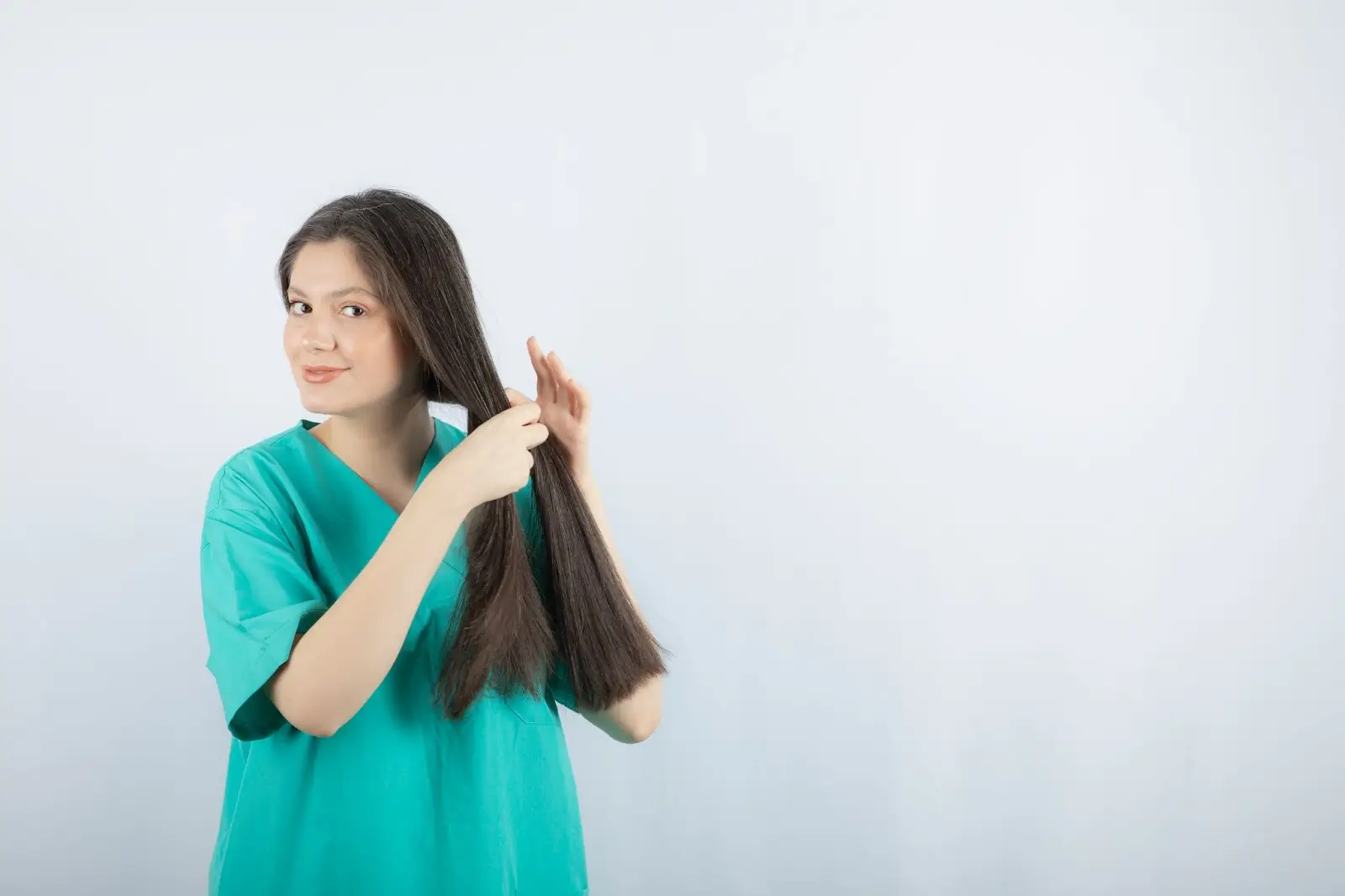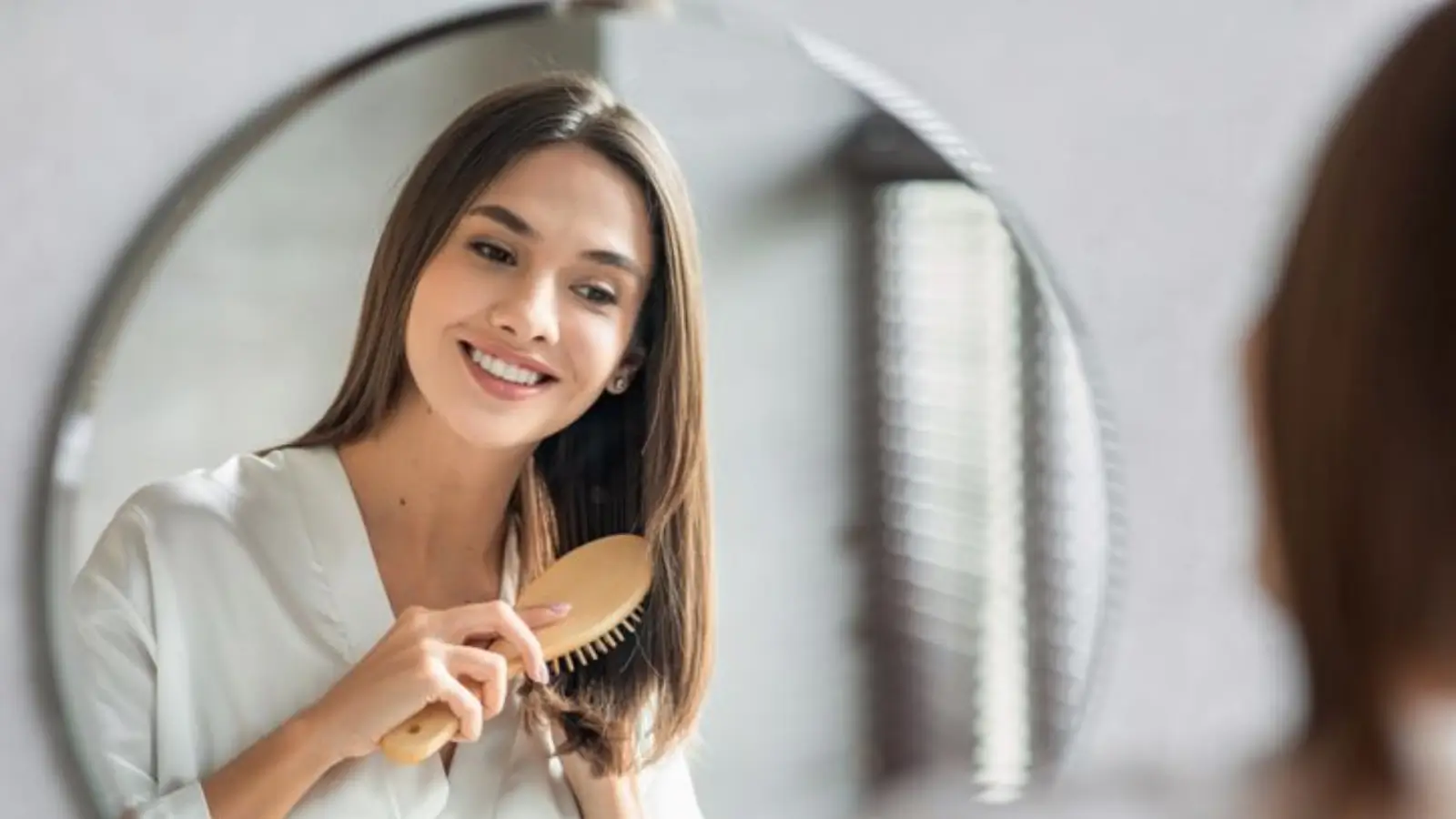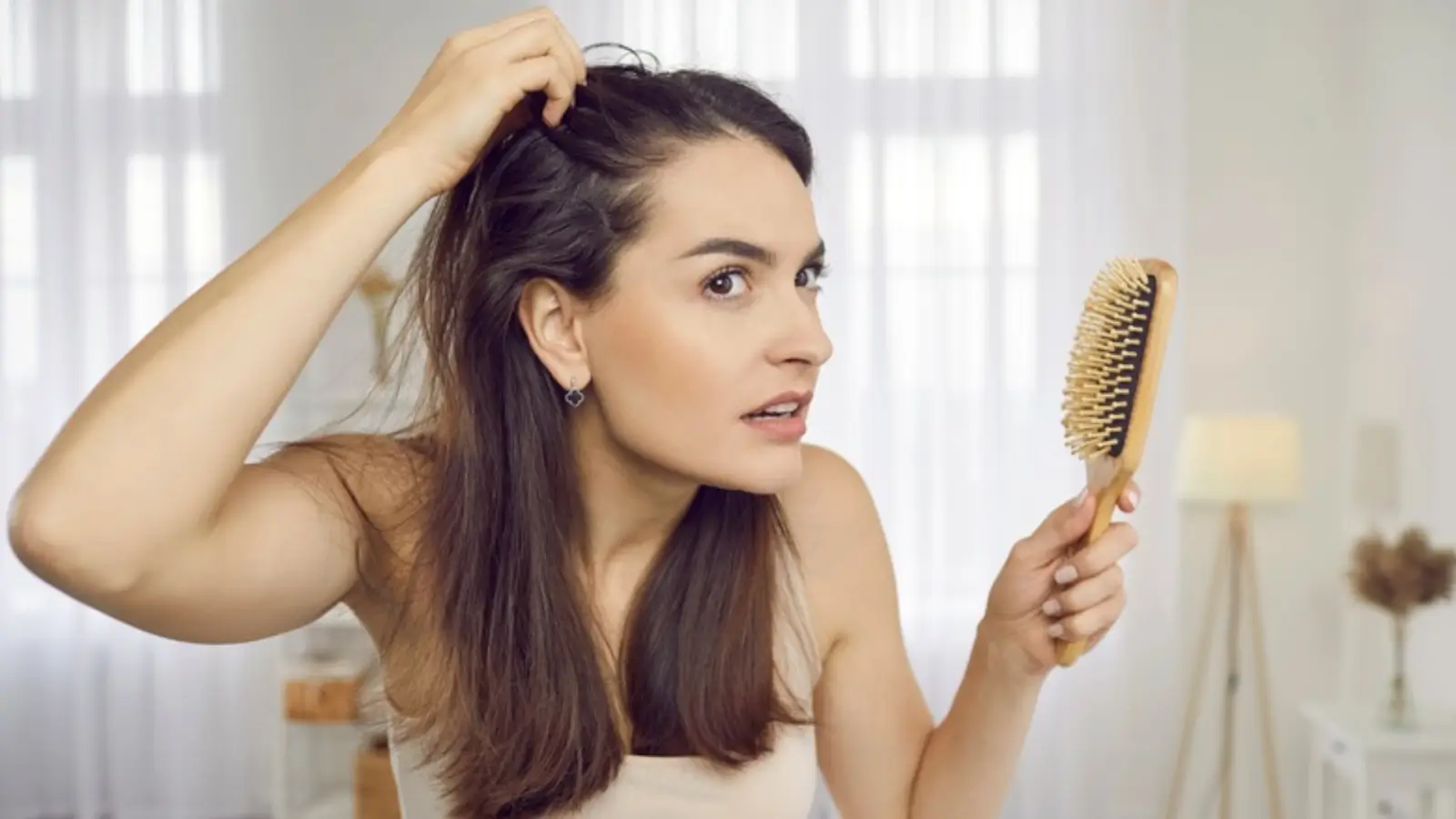
Hair loss affects more people than we often realize. Recent studies reveal that by the age of 49, around 85% of men and 25% of women may experience some form of female pattern hair loss. These statistics underscore the increasing demand for innovative and effective hair care solutions.
Among the exciting breakthroughs in hair restoration is Plinest Hair, a polynucleotide-based treatment designed initially for skin rejuvenation. Now being adapted for the scalp, Plinest is showing great potential in promoting healthier hair follicles, strengthening existing hair, and improving overall scalp health. Its ability to support hair growth and enhance hair quality is generating significant interest.
In this article, we’ll explore how Plinest Hair works, its impressive benefits for both scalp condition and hair quality, and what you can expect from this groundbreaking treatment.
Key Takeaways
- Plinest Hair uses PN-HPT™, a formulation of purified polynucleotides derived from trout DNA, to improve scalp health and hair quality. It enhances microcirculation, reduces inflammation, and stimulates fibroblast activity, leading to healthier follicles and stronger hair.
- Plinest Hair is beneficial for early-stage androgenetic alopecia, telogen effluvium, post-COVID hair thinning, and sensitive scalps. Its regenerative effects improve hair density, strength, and overall scalp condition without relying on hormones.
- The treatment consists of 4 to 6 sessions, spaced 2-3 weeks apart, with follow-up sessions scheduled every 3-6 months. It is delivered through mesotherapy using fine needles, making it a minimally invasive solution with minimal downtime.
- For enhanced results, Plinest Hair can be combined with treatments like minoxidil, LED light therapy, microneedling, and nutraceuticals to boost hair regeneration and scalp health.
- This treatment is ideal for individuals seeking non-hormonal, low-risk solutions for hair loss and those with sensitive scalps or adverse reactions to stronger treatments.
- Patients typically see improvements after 2-3 sessions, including increased hair density, enhanced strength, and improved scalp health.
About: Doctor Medica is your trusted supplier of top-quality dermal fillers, viscosupplements, and more for your medical practice. We offer genuine products from leading brands at the lowest prices in the market. If you’re looking to order Plinest online for your practice, contact Doctor Medica today.
Mechanism of Action: How Plinest Hair Supports Follicular Health

Plinest Hair uses PN-HPT™, a formulation of highly purified polynucleotides derived from trout DNA, which are well-known for their regenerative properties. These polynucleotides work by enhancing microcirculation in the scalp, ensuring that oxygen and nutrients are delivered more efficiently to the hair follicles. This improved blood flow helps to revitalize dormant follicles and supports the growth of active ones, ensuring a healthier scalp and stronger hair over time.
In addition to improving circulation, PN-HPT also plays a crucial role in reducing local inflammation, a common cause of hair loss. By mitigating these inflammatory responses, the treatment creates an optimal environment for hair growth. The therapy further promotes tissue regeneration at the dermal-papilla interface, which is crucial for initiating the hair growth cycle. This comprehensive approach helps address the root causes of hair thinning.
Furthermore, Plinest Hair stimulates fibroblasts, which leads to the remodeling of the extracellular matrix (ECM) and the promotion of angiogenesis (the formation of new blood vessels). These processes help strengthen the scalp’s structural integrity, further enhancing overall scalp health and promoting optimal hair growth.
For patients looking for a quick solution, Plinest Fast offers a faster method for addressing other concerns like skin rejuvenation, though it differs in mechanism and application from the regenerative actions seen in Plinest Hair.
Clinical Indications and Ideal Patient Profiles for Plinest Hair

Plinest Hair is effective in addressing a wide range of hair loss conditions, making it a versatile and valuable option in modern scalp and hair therapy. Its regenerative approach, based on PN-HPT™ technology, makes it especially suitable for individuals seeking non-hormonal, low-risk treatments that target the underlying causes of hair thinning rather than just masking the symptoms.
- Early-Stage Androgenetic Alopecia: This common form of pattern hair loss affects both men and women, typically starting with thinning at the crown or temples. Plinest Hair is particularly beneficial at the onset of hair loss, helping to preserve existing hair and stimulate regrowth by improving follicular health and scalp microcirculation.
- Telogen Effluvium: Characterized by sudden, diffuse shedding of hair, telogen effluvium often results from physical or emotional stress, illness, surgery, or hormonal fluctuations. Plinest Hair can help shorten the recovery time by restoring scalp balance and promoting the transition of follicles back to the growth phase.
- Post-COVID Hair Thinning: Many individuals report significant hair loss after recovering from COVID-19, often linked to the body’s stress response. Plinest Hair offers a gentle, effective intervention to support follicular recovery and reduce shedding without triggering additional irritation or inflammation.
- Sensitive or Reactive Scalps: For patients who cannot tolerate stronger treatments, such as minoxidil or oral medications, Plinest Hair offers a safe and effective alternative. Its biocompatible formulation makes it ideal for delicate scalps and for those who have experienced side effects from topical or systemic therapies.
In addition, both men and women seeking non-hormonal solutions for hair loss can benefit from Plinest Hair, particularly those who are not suitable candidates for hormone-based treatments due to medical reasons or personal preference. Its gentle yet potent regenerative action addresses thinning at the root, offering visible improvements in hair strength, density, and overall scalp condition.
Plinest Hair Treatment Protocol and Administration Guidelines
Plinest Hair is administered through a precise and minimally invasive technique that ensures targeted delivery and optimal results. Below is a breakdown of the standard treatment protocol:
| Protocol Component | Details |
| Technique | Delivered via mesotherapy using fine needles (30–32G) directly into areas of thinning hair. |
| Dosage | Typically, 2 ml of solution is used per session. |
| Initial Treatment | 4 to 6 sessions spaced 2–3 weeks apart for optimal regeneration and visible improvement. |
| Maintenance | Follow-up sessions are conducted every 3–6 months, depending on the patient’s response and desired outcome. |
This structured protocol enables effective scalp treatment with minimal discomfort and downtime, making it suitable for individuals with busy lifestyles. The non-invasive nature of Plinest Hair treatment ensures that patients can achieve lasting results with minimal disruption to their daily routine.
Results, Comparisons, and Complementary Therapies
Patients undergoing Plinest Hair treatment typically begin to notice improvements after 2 to 3 sessions, depending on the severity of hair loss and scalp condition. These results are both aesthetic and structural, contributing to healthier hair and a revitalized scalp environment. Some observed benefits include:
- Increased Hair Density: Hair strands appear visibly thicker and fuller, with improved volume across thinning areas. This is often one of the earliest and most noticeable outcomes.
- Enhanced Hair Strength: Patients report reduced breakage and less hair fall during combing or washing, indicating stronger and more resilient hair shafts.
- Improved Scalp Health: A healthier scalp is observed through reduced inflammation, flaking, and dryness, along with improved hydration and microcirculation.
Unlike other popular treatments, Plinest Hair offers a non-hormonal, regenerative approach to hair restoration. This makes it particularly beneficial for individuals who are not candidates for hormone-based therapies.
Recommended Complementary Therapies
To amplify the results of Plinest Hair, the following treatments can be incorporated into a comprehensive care regimen:
- Topical Therapies: Co-application with clinically approved topicals, such as minoxidil, can deliver synergistic effects by targeting both the vascular supply and cellular regeneration.
- LED Light Therapy: Low-level light therapy (LLLT) boosts cellular activity and enhances circulation, complementing the regenerative action of polynucleotides.
- Microneedling: Increases dermal absorption of Plinest Hair and stimulates collagen production, creating microchannels that enhance product delivery.
- Nutraceuticals: Supplements containing biotin, zinc, and amino acids help support the hair cycle internally, improving overall outcomes when used consistently.
By combining these therapies, patients may experience faster, more sustained improvements in both hair quality and scalp condition. The non-hormonal nature of Plinest Hair also means it integrates seamlessly into a wide range of personalized treatment plans.
Conclusion
Plinest Hair offers a promising solution for individuals seeking to enhance their scalp condition and hair quality through regenerative therapy. By targeting the underlying causes of hair loss and promoting a healthier scalp environment, it provides a comprehensive approach to hair restoration.
Consultation with a healthcare professional can help determine if Plinest Hair is the right choice for your hair health journey.
FAQs
1. How long does it take to see results with Plinest Hair?
Most patients notice improvements in hair density and strength after two to three sessions. However, results can vary based on individual conditions and adherence to the treatment protocol.
2. Is Plinest Hair suitable for all types of hair loss?
Plinest Hair is effective for early-stage androgenetic alopecia, telogen effluvium, post-COVID hair thinning, and for individuals with sensitive scalps. It’s best to consult with a specialist to determine suitability.
3. Can Plinest Hair be combined with other treatments?
Yes, combining Plinest Hair with therapies like minoxidil, LED therapy, microneedling, or nutraceuticals can enhance results. Your healthcare provider can customize an appropriate treatment plan for you and your goals.
4. Are there any side effects with Plinest Hair?
Side effects are minimal, typically including mild redness or swelling at injection sites, which subside within a few hours. Always consult with a qualified professional to understand potential risks.
References
Men’s Hair Loss. American Hair Loss Association. Published May 10, 2024. https://www.americanhairloss.org/mens-hair-loss/
Fabbrocini G, Cantelli M, Masarà A, Annunziata MC, Marasca C, Cacciapuoti S. Female pattern hair loss: A clinical, pathophysiologic, and therapeutic review. Int J Womens Dermatol. 2018;4(4):203-211. Published 2018 Jun 19. doi:10.1016/j.ijwd.2018.05.001
Thanasarnaksorn W, Limsuchaiwat N, Sirithanabadeekul P, Charoensuksira S, Suwanchinda A, Meephansan J. Polynucleotides as a novel therapeutic approach in androgenetic alopecia: an analysis of effectiveness and safety. Archives of Dermatological Research. 2025;317(1). doi:10.1007/s00403-025-03908-6
Related Articles
Joanna Carr
Rejuran FDA Approved – Is It Safe?
Rejuran is a popular skin rejuvenation treatment derived from salmon DNA, known for enhancing skin texture and promoting collagen production.
Joanna Carr
Intraline Dermal Fillers – Everything You Need to Know
Learn all about Intraline dermal fillers, including their ingredients, applications, safety profile, and how they compare to other aesthetic injectabl...
Joanna Carr
Botox Crows Feet Explained – Why Is It So Popular
Interested in learning more about Why Botox Is So Popular For Crows Feet Treatment? Browse Doctor Medica's comprehensive archive of blog posts.


